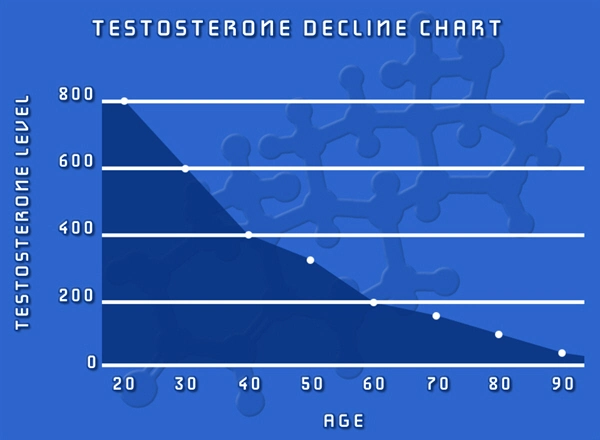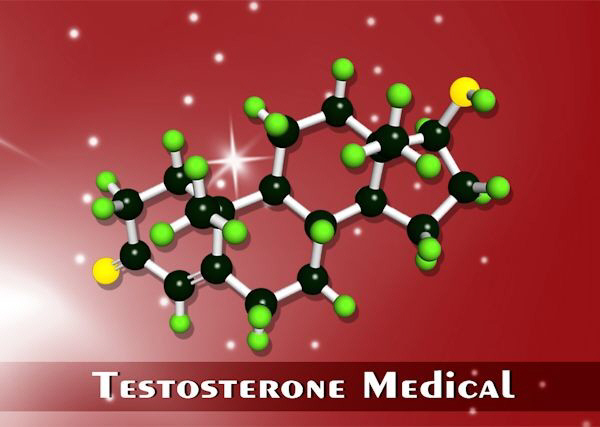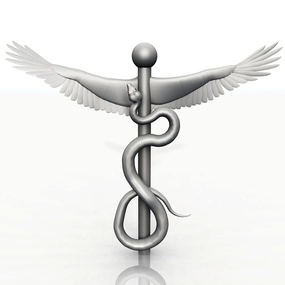Video Link: https://vimeo.com/290595630
Video Download: Click Here To Download Video
Video Stream: Click Here To Stream Video
Video Link: https://vimeo.com/290596200
Video Download: Click Here To Download Video
Video Stream: Click Here To Stream Video
If you are considering giving injectable testosterone a try, you need to know as much as possible before plunging in and taking that first step.
Keep reading.
This brief article will provide you with the basics: a look at the science as to how testosterone works, the difference between Cypionate and Enanthate, recommended dosages, and potential side effects.
WARNING: NOTHING YOU READ HERE WILL SUBSTITUTE FOR THE ADVICE AND SUPERVISION OF YOUR PHYSICIAN OR OTHER  PROFESSIONAL HEALTHCARE PROVIDER.
PROFESSIONAL HEALTHCARE PROVIDER.
NEVER TRY EXPERIMENTING WITH TESTOSTERONE ON YOUR OWN.
MAKE SURE YOU ARE CONTINUALLY MONITORED BY BLOOD TESTS WHILE YOU ARE UNDERGOING TESTOSTERONE REPLACEMENT THERAPY (TRT), AND BE AWARE OF THE SYMPTOMS OF SIDE EFFECTS.
SOME OF THESE SIDE EFFECTS CAN BE VERY SERIOUS.
CAVEAT EMPTOR!
Testosterone Esters
Much of the testosterone prescribed for testosterone replacement therapy is in the form of testosterone "esters."
An ester is merely a name for a chemical compound that forms from a reaction between a carboxylic acid and alcohol.
A simple chemical diagram of this result is shown below in Figure A.
Figure B shows the chemical structure of free testosterone (chemical formula C19H28O2) as well as two different esters of testosterone (testosterone cypionate and testosterone enanthate).
 There are many different esters of testosterone, but here we will only be discussing two of the most commonly prescribed injectables: testosterone enanthate and testosterone cypionate.
There are many different esters of testosterone, but here we will only be discussing two of the most commonly prescribed injectables: testosterone enanthate and testosterone cypionate.
Each of these various esters is a molecular chain composed of carbon, hydrogen, and oxygen atoms.
The main difference between the different esters is how many carbon and hydrogen atoms make up the chain.
For example, the propionate ester is composed of 3 carbons, six hydrogens, and two oxygens, whereas the cypionate ester consists of 8 carbons, 14 hydrogens, and two oxygens.
To improve the solubility of testosterone in oil, the substance undergoes a process called esterification, which also slows the release of the testosterone from the injection site.
Testosterone, in its free, non-esterified form, has poor solubility in either oil or water, though it can be suspended in water.
Non-esterified testosterone is available in an aqueous injectable form with the drug name "Aquaviron."
However, this type of testosterone only stays active in the body for a brief period (a matter of hours).
Because of this, it must be injected daily to maintain a continuous level of testosterone in the blood.
Therefore it is rarely used for testosterone replacement therapy as an injectable.
 Once you have added an ester group to testosterone, it becomes even less soluble in water and more soluble in oil.
Once you have added an ester group to testosterone, it becomes even less soluble in water and more soluble in oil.
Usually, the more carbon atoms there are in an ester, the more soluble the ester is in oil.
For example, testosterone propionate (with three carbon atoms in the ester group) is less soluble in oil than testosterone cypionate (with eight carbon atoms in the ester group).
However, this is a general rule; the solubility of a molecule depends on structural factors that are beyond the scope of this article.
So generally, the more carbons the ester group has, it becomes more soluble in oil and less soluble in water.
The term for this ratio between oil and water solubility is called the "partition coefficient," that is, the higher the solubility in oil, the higher the partition coefficient.
Why is this important?
Because the partial coefficient affects how long the drug itself stays in the system.
If the testosterone transfers too quickly from the oil to the blood, the result is a sudden spike in testosterone which then rapidly drops once the dose has been used up. This is not the desired result.
The slower-acting testosterone is, the better.
Testosterone cypionate has a high partition coefficient.
When injected, the drug remains in its esterified form once it enters the muscle tissue.
From there, it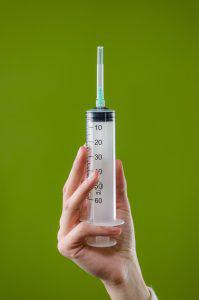 will slowly enter the circulation as it is picked up in small quantities by the blood.
will slowly enter the circulation as it is picked up in small quantities by the blood.
Once the esterified testosterone is brought into the bloodstream, "esterase enzymes" tear off the ester chain in a process known as "hydrolyzation."
This leaves the testosterone in its free form to execute its different actions and effects.
When a particular testosterone ester is "fast-acting" or "slow-acting," it usually refers to the partition coefficient/solubility in oil.
As described above, esters with more carbon atoms will be more soluble in oil; they are often referred to as "slow-acting" esters (they stay active in the system longer).
Esters that are less soluble in oil are often referred to as "fast-acting" forms of testosterone, referring to the fact that they are more quickly available and used up in the bloodstream.
For men who are using injectable testosterone, slow-acting esters tend to be preferred, as fewer injections are needed as time passes to keep the blood levels of testosterone reasonably constant.
Testosterone enanthate (7 carbons) and testosterone cypionate (8 carbons) both take about 8-10 days to be fully released into the system and so they are typically injected once every 7-14 days.
Testosterone propionate (3 carbons) takes about 3-4 days to be fully released in the system and must be injected in smaller doses at least weekly if not twice weekly.
Dosage Amount and Frequency
The dosage amount and timing for injectable testosterone will depend mainly upon which ester is used, as well as the individual's response to the hormone. In general, dosages will vary between 50 mg and 300 mg per injection, depending on the ester and the dosing regimen.
An average injectable dose is  about 200-250 mg every two weeks, though many men inject 100 mg every week or every ten days, or other variations depending on their own bodies' needs and sensitivities.
about 200-250 mg every two weeks, though many men inject 100 mg every week or every ten days, or other variations depending on their own bodies' needs and sensitivities.
Again, the exact dosage required will vary from person to person, and health and well-being should be carefully monitored while determining an individual's ideal dose.
Testosterone esters are typically suspended in either cottonseed oil or sesame seed oil.
Some people find that they may have an allergic or skin reaction to one of the oils.
Individual brand-name testosterone esters are mass-produced using one oil or the other (as noted below), but by using a compounding pharmacy, you can have any testosterone ester suspended in your choice of oil (with a proper prescription).
As always, discuss this with your prescribing physician.
Testosterone Enanthate: Chemical formula C26H40O3
Testosterone enanthate is one of the primary forms of testosterone prescribed to men in the United States.
It is a slow-acting ester with a release time of 8-10 days.
The name-brand of testosterone enanthate available in the United States is called "Delatestryl," which is suspended in sesame oil.
Testosterone enanthate is typically injected anywhere between once every week to once every two weeks.
Generic testosterone enanthate can also be obtained through a compounding pharmacy; such stores can mix testosterone enanthate in sesame, cottonseed, or any other appropriate oil.
Some physicians combine individual esters for patients since this may give better blood level distribution, although no studies have been done in the United States using ester blends.
Testosterone Cypionate: Chemical formula C27H40O3.
Testosterone cypionate is the other primary injectable form of testosterone prescribed to men in the United States.
It is a slow-acting ester with a release time  between 8-10 days, similar to that of enanthate.
between 8-10 days, similar to that of enanthate.
The name-brand of testosterone cypionate available in the United States is called "Depo-Testosterone," which is suspended in cottonseed oil.
Testosterone cypionate is typically injected anywhere between once every week to once every two weeks.
Like testosterone enanthate, testosterone cypionate can also be obtained through a compounding pharmacy; such stores can mix testosterone cypionate in sesame, cottonseed, or any other appropriate oil.
Some doctors like to prescribe 300 mg every three weeks, but many believe that this amount accentuates the peaks and valleys of testosterone blood levels a lot more than the most commonly used dose of 100 or 200 mg every two weeks.
Cypionate is the drug of choice for many men, especially athletes and bodybuilders.
This is due to its quick anabolic (muscle-building) action. It is capable of giving increases in size and strength and doing it quickly.
In the worlds of powerlifting and football, it is not uncommon for athletes to use as much as 2000-4000 mg per week!
This can lead to aberrant and aggressive behavior.
Most of the men using these mega-doses are only concerned about increasing their size and strength, not their health. Also, they don't mind being aggressive jerks.
At this mega-dose level, users can be a danger, not only to themselves but everyone else as well.
These high doses can also result in many nasty side effects: hypertension, baldness, acne, and liver damage.
It is only moderately toxic to the liver, but when abused it can wreak havoc on the body's endogenous production of testosterone.
One would think that even the stupidest athletes know this, but they just don't care. They want strength, and the consequences are ignored.
However, when used correctly, under the direct care and supervision of a physician that is knowledgeable about testosterone, this should not be a problem.
Follow the instructions of your doctor, and do not exceed the dosage on your own!
Which form of testosterone should I use?
It's not a big deal.
Some users say that enanthate lacks the power of cypionate, but most men cannot differentiate between the two.
They are both usually injected in the same time frame, and unless you have a known sensitivity to water retaining drugs, they are indistinguishable.
If you do keep water, enanthate would be the best choice. Discuss this with your physician.
A warning about increasing your T dosage
 When beginning TRT, some men may feel impatient while waiting for changes to happen.
When beginning TRT, some men may feel impatient while waiting for changes to happen.
Some even consider doubling or tripling their dose, mistakenly thinking this will speed up the process. As previously mentioned, DO NOT DO THIS!
In fact, increasing your dose might have the effect of slowing your changes. This is because excess testosterone in your body can be converted into estrogen by an enzyme called "aromatase."
This conversion is part of the body's natural feedback system: if there is an abundance of testosterone in the body, it is converted ("aromatized") to estrogen to maintain a "normal" hormonal balance.
Therefore, taking massive doses of testosterone is not the road to go. Testosterone replacement, when done correctly, is a long-term project.
And that is precisely how our clinic approaches testosterone therapy. We will ensure that your testosterone therapy is done safely and correctly. Contact us.
Reference
Beyond testosterone cypionate: evidence behind the use of nandrolone in male health and wellness.
Contact Us Today For A Free Consultation
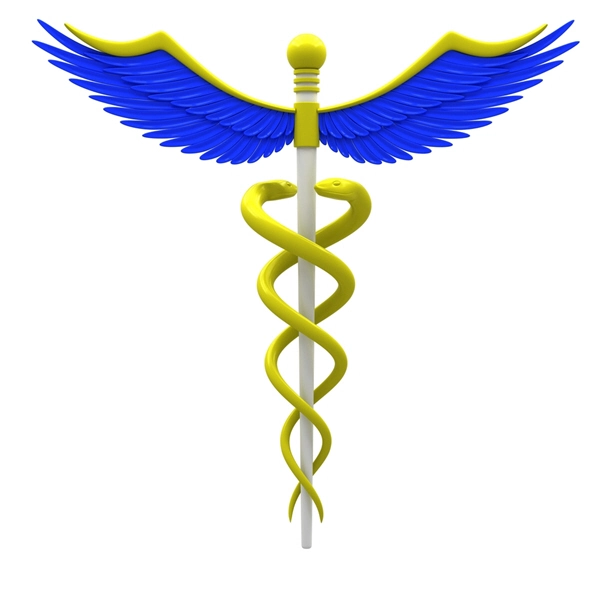
- Adverse Effects of Testosterone Therapy in Adult Men: A Systematic Review and Meta-Analysis [Last Updated On: July 2nd, 2024] [Originally Added On: June 4th, 2010]
- Low Testosterone Levels, Foods That Increase Testosterone Levels wwwSelf-Improvement-Bible.com [Last Updated On: November 12th, 2023] [Originally Added On: May 30th, 2011]
- Low Testosterone in Men: The Next Big Thing in Medicine! - Abraham Morgentaler, MD [Last Updated On: May 7th, 2023] [Originally Added On: June 3rd, 2011]
- How To Determine Testosterone Levels By Looking At Your Ring Finger [Last Updated On: December 7th, 2017] [Originally Added On: June 30th, 2011]
- Prolab Horny Goat Weed Testosterone Booster Supplement Review [Last Updated On: November 23rd, 2023] [Originally Added On: July 19th, 2011]
- The Healthy Skeptic: Products make testosterone claims [Last Updated On: August 13th, 2024] [Originally Added On: September 11th, 2011]
- How To Naturally Increase Testosterone [Last Updated On: November 21st, 2023] [Originally Added On: September 28th, 2011]
- Testosterone Production - Video [Last Updated On: November 25th, 2024] [Originally Added On: November 20th, 2011]
- Testosterone makes us less cooperative and more egocentric, study finds [Last Updated On: January 23rd, 2018] [Originally Added On: February 1st, 2012]
- Testosterone makes us less cooperative and more egocentric [Last Updated On: January 24th, 2018] [Originally Added On: February 1st, 2012]
- Too much testosterone makes for bad decisions, tests show [Last Updated On: May 4th, 2015] [Originally Added On: February 1st, 2012]
- Today in Research: Testosterone's Negative Effects; Diet Soda Death [Last Updated On: January 2nd, 2018] [Originally Added On: February 2nd, 2012]
- Testosterone drives ego, trips cooperation [Last Updated On: December 2nd, 2017] [Originally Added On: February 4th, 2012]
- FDA approves BioSante/Teva's testosterone gel [Last Updated On: May 4th, 2015] [Originally Added On: February 15th, 2012]
- 'Manly' Fingers Make For Strong Jawline in Young Boys [Last Updated On: December 1st, 2017] [Originally Added On: February 15th, 2012]
- Teva, BioSante Win U.S. Approval for Testosterone Therapy [Last Updated On: December 10th, 2017] [Originally Added On: February 15th, 2012]
- BioSante Gains on Approval of Testosterone Gel: Chicago Mover [Last Updated On: January 8th, 2018] [Originally Added On: February 16th, 2012]
- BioSante soars following drug approval from FDA [Last Updated On: December 26th, 2017] [Originally Added On: February 16th, 2012]
- Antibodies, Not Hard Bodies: The Real Reason Women Drool Over Brad Pitt [Last Updated On: December 24th, 2017] [Originally Added On: February 21st, 2012]
- Almark Publishing Releases Book From Mark Rosenberg, M.D. Revealing Natural Discoveries Associated With Low ... [Last Updated On: May 4th, 2015] [Originally Added On: February 28th, 2012]
- Testosterone Replacement Clinic Comes to Kansas City with Potential to Help Thousands of Men [Last Updated On: May 4th, 2015] [Originally Added On: March 1st, 2012]
- Study examines the relative roles of testosterone and its metabolite, dihydrotestosterone in men [Last Updated On: December 2nd, 2017] [Originally Added On: March 7th, 2012]
- The Role of 5{alpha}-Reductase Inhibition in Men Receiving Testosterone Replacement Therapy [Editorial] [Last Updated On: December 21st, 2017] [Originally Added On: March 7th, 2012]
- Effect of Testosterone Supplementation With and Without a Dual 5{alpha}-Reductase Inhibitor on Fat-Free Mass in Men ... [Last Updated On: January 3rd, 2018] [Originally Added On: March 7th, 2012]
- Why We Like Men Who Can Keep Their Cool [Last Updated On: December 30th, 2017] [Originally Added On: March 7th, 2012]
- Testosterone And Heart Health [Last Updated On: May 4th, 2015] [Originally Added On: March 10th, 2012]
- Your Life on Testosterone: Overly Sure of Yourself, Unwilling to Listen [Last Updated On: November 25th, 2018] [Originally Added On: March 15th, 2012]
- Mayo Clinic-TGen study role testosterone may play in triple negative breast cancer [Last Updated On: December 8th, 2017] [Originally Added On: March 23rd, 2012]
- A dose of testosterone might not cure what ails you [Last Updated On: January 23rd, 2018] [Originally Added On: March 25th, 2012]
- Green tea could aid athletes hide testosterone doping [Last Updated On: December 16th, 2017] [Originally Added On: March 25th, 2012]
- TGen Study Role Testosterone May Play in Triple Negative Breast Cancer [Last Updated On: December 6th, 2017] [Originally Added On: March 26th, 2012]
- Testosterone low, but responsive to competition, in Amazonian tribe [Last Updated On: January 23rd, 2018] [Originally Added On: March 28th, 2012]
- Competition-linked bursts of testosterone are fundamental aspect of human biology, study of Amazonian tribe suggests [Last Updated On: December 25th, 2017] [Originally Added On: March 28th, 2012]
- Playing football boosts testosterone levels by 30 percent! [Last Updated On: February 4th, 2024] [Originally Added On: March 28th, 2012]
- Testosterone low, but responsive to competition, in Amazonian tribe -- with slideshow [Last Updated On: December 9th, 2017] [Originally Added On: March 28th, 2012]
- The benefits of testosterone pellet therapy [Last Updated On: January 24th, 2018] [Originally Added On: March 29th, 2012]
- Low testosterone levels cause health woes [Last Updated On: November 25th, 2018] [Originally Added On: March 30th, 2012]
- Heart Failure Patients Getting Relief from Testosterone Supplements [Last Updated On: May 4th, 2015] [Originally Added On: April 21st, 2012]
- Study Finds Fatherhood Suppresses Testosterone [Last Updated On: May 4th, 2015] [Originally Added On: May 3rd, 2012]
- Low testosterone levels could raise diabetes risk for men [Last Updated On: January 26th, 2018] [Originally Added On: May 5th, 2012]
- Why low testosterone may increase your risk of diabetes [Last Updated On: November 25th, 2024] [Originally Added On: May 5th, 2012]
- Diabetes link to low testosterone [Last Updated On: November 25th, 2024] [Originally Added On: May 5th, 2012]
- Testosterone Linked to Weight Loss in Obese Men [Last Updated On: January 2nd, 2018] [Originally Added On: May 11th, 2012]
- Testosterone may help weight loss [Last Updated On: November 25th, 2024] [Originally Added On: May 11th, 2012]
- Testosterone-fuelled infantile males might be a product of Mom's behaviour [Last Updated On: December 25th, 2017] [Originally Added On: May 11th, 2012]
- Testosterone-fueled infantile males might be a product of Mom's behavior [Last Updated On: January 6th, 2018] [Originally Added On: May 11th, 2012]
- Testosterone supplements may help obese men lose weight [Last Updated On: January 5th, 2018] [Originally Added On: May 11th, 2012]
- Testosterone supplements 'can help men lose their middle-aged spread' [Last Updated On: November 25th, 2024] [Originally Added On: May 12th, 2012]
- Some doctors question safety of testosterone replacement therapy [Last Updated On: January 20th, 2018] [Originally Added On: May 15th, 2012]
- Health Canada Approves New Testosterone Topical Solution for Men [Last Updated On: May 4th, 2015] [Originally Added On: May 15th, 2012]
- Environment trumps genes in testosterone levels, study finds [Last Updated On: May 4th, 2015] [Originally Added On: May 15th, 2012]
- Global Testosterone Replacement Therapy (TRT) Industry [Last Updated On: May 4th, 2015] [Originally Added On: May 21st, 2012]
- Testosterone Fuels Boom, Swindler Sows Panic: Top Business Books [Last Updated On: January 13th, 2018] [Originally Added On: June 2nd, 2012]
- Increase in testosterone drug use [Last Updated On: April 12th, 2018] [Originally Added On: June 4th, 2012]
- Testosterone Promotes Agression Automatically [Last Updated On: January 29th, 2018] [Originally Added On: June 9th, 2012]
- Testosterone shown to help sexually frustrated women [Last Updated On: January 27th, 2018] [Originally Added On: June 9th, 2012]
- Research and Markets: Testosterone Replacement Therapy (TRT) - Global Strategic Business Report [Last Updated On: December 23rd, 2017] [Originally Added On: June 12th, 2012]
- Proposed testosterone testing of some female olympians challenged by Stanford scientists [Last Updated On: January 30th, 2018] [Originally Added On: June 14th, 2012]
- Testosterone Makes Bosses Into Jerks, Says Paul Zak [Last Updated On: January 8th, 2018] [Originally Added On: June 14th, 2012]
- Testosterone Therapy: A Misguided Approach to Erectile Dysfunction (ED) [Last Updated On: May 4th, 2015] [Originally Added On: June 20th, 2012]
- New drugs, new ways to target androgens in prostate cancer therapy [Last Updated On: January 8th, 2018] [Originally Added On: June 20th, 2012]
- Long-term testosterone treatment for men results in reduced weight and waist size [Last Updated On: January 19th, 2018] [Originally Added On: June 23rd, 2012]
- Declining testosterone levels in men not part of normal aging, study finds [Last Updated On: December 27th, 2017] [Originally Added On: June 23rd, 2012]
- Low testosterone not normal part of aging [Last Updated On: December 22nd, 2017] [Originally Added On: June 25th, 2012]
- Testosterone Does Not Necessarily Wane With Age [Last Updated On: December 6th, 2017] [Originally Added On: June 25th, 2012]
- Overweight men can boost low testosterone levels by losing weight [Last Updated On: December 10th, 2017] [Originally Added On: June 25th, 2012]
- Testosterone-replacement therapy improves symptoms of metabolic syndrome [Last Updated On: January 14th, 2018] [Originally Added On: June 26th, 2012]
- Testosterone therapy takes off pounds [Last Updated On: December 11th, 2017] [Originally Added On: June 26th, 2012]
- Weight loss may boost men's testosterone [Last Updated On: May 4th, 2015] [Originally Added On: June 27th, 2012]
- Low Testosterone? Study finds age may not be to blame [Last Updated On: May 4th, 2015] [Originally Added On: July 1st, 2012]
- Do you have low testosterone? [Last Updated On: December 15th, 2017] [Originally Added On: July 8th, 2012]
- Wall Streeters Buying Testosterone for an Edge [Last Updated On: May 4th, 2015] [Originally Added On: July 12th, 2012]
- Beefy Wall Street Traders rub on testosterone [Last Updated On: February 20th, 2024] [Originally Added On: July 12th, 2012]
- Tale of two runners exposes flawed Olympic thinking [Last Updated On: December 23rd, 2024] [Originally Added On: July 19th, 2012]
- Genetic markers for testosterone and estrogen level regulation identified [Last Updated On: January 6th, 2018] [Originally Added On: July 20th, 2012]
- BUSM researchers identify genetic markers for testosterone, estrogen level regulation [Last Updated On: December 18th, 2017] [Originally Added On: July 20th, 2012]
- DRS. OZ AND ROIZEN: How to reap the benefits of normal testosterone levels [Last Updated On: December 23rd, 2024] [Originally Added On: July 21st, 2012]
- How Testosterone Drives History [Last Updated On: December 24th, 2024] [Originally Added On: July 22nd, 2012]
- Testosterone replacement is "fountain of youth" for men [Last Updated On: January 3rd, 2018] [Originally Added On: July 27th, 2012]
- Pill for low testosterone in men heads for phase II clinical trials [Last Updated On: December 31st, 2017] [Originally Added On: August 2nd, 2012]
Word Count: 1750


